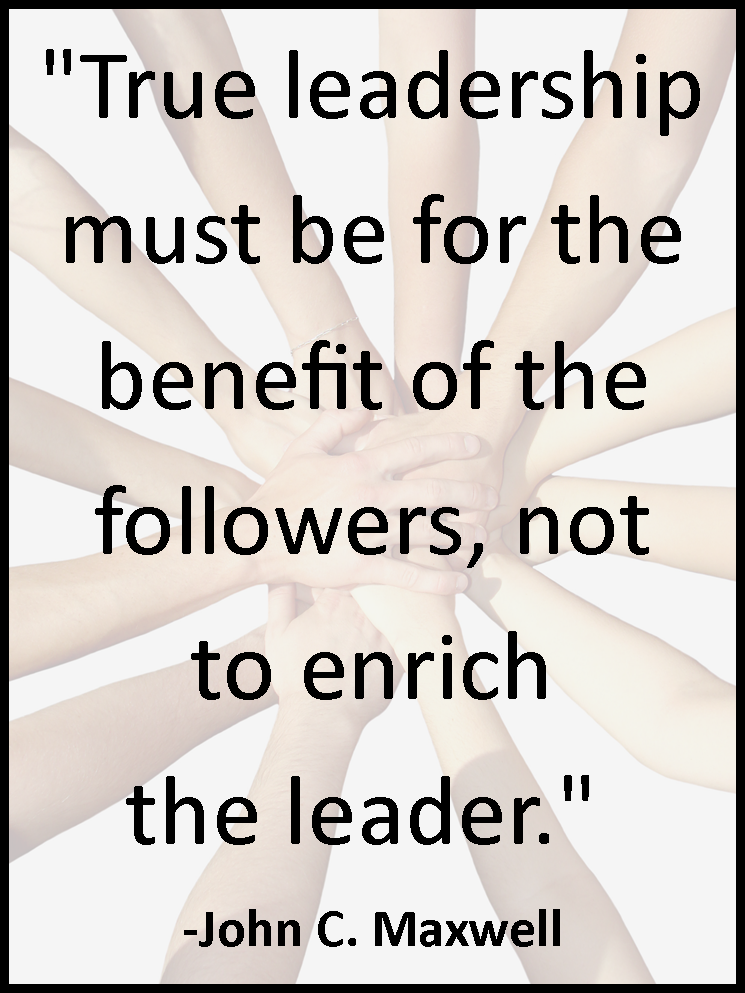Servant leadership exemplifies a leader’s response and commitment to their clarion call to serve humankind with the highest level of personal/professional integrity, honesty and cooperation with stakeholders. Placing the needs, interests and expectations of others ahead of personal gain embody servant leadership. This is humility not weakness; when weak, He is strong. Principles of servant leadership direct organization leaders to role-model the organization’s expectations so stakeholders can demonstrate what is expected of them in the workplace. During times of organization change, the core values of leaders and stakeholders take center stage and will identify those who truly embody the characteristics of the organization.
The testing of faith without prompting will surface when confronted with stakeholders whose viewpoint oppose leadership and the new direction of the organization. How leaders acknowledge opposition and promote the new direction of the organization determine the depth of stakeholders’ relationship embeddedness to organization principles. The behaviors, attitudes and actions of stakeholders and leaders reveal core values of organizations. Anything opposite of organization core values require immediate attention and modification to align with organization expectations. In-service training re-acquaint stakeholders to organization core values, job expectations and performance measures.
It is essential leadership role-model expectations they desire in internal stakeholders especially when the organization is experiencing change. Role-modeling is not just engaging internal stakeholders through meetings and trainings; it is demonstrating how internal stakeholders are to behave, think and act when undergoing times of uncertainty. Internal stakeholders often perceive and act on a false sense of reality based on internal organizational grapevine that is proven unreliable and dangerous (Darskuviene and Bendoraitiene, 2014). Most times, leaders avoid rather than professionally confront how internal stakeholders perceive organizational goals and expectations. Internal stakeholders with the most influence can thwart the company’s core value by transferring faulty practices to inexperienced stakeholders through their relationships. When this happens, quality and quantity are lowered. Team cohesiveness is corroded and a heightened level of mistrust, suspicion and confusion emerge.
Department interrelatedness is essential to organizational growth and effectiveness. Through a myriad of ways do stakeholders’ level of interaction emerge and change. Stakeholder expectations, needs and interests interface and can benefit or harm the organization’s brand, goals and community perception. Relationship embeddedness is a critical conduit for lasting organization identity that is enmeshed with stakeholders. Stakeholders’ perception impact organizational trajectory and through active interaction and willingness to engage in meaningful communication, do systems maintain interactions with all of its parts. Having different needs, expectations and perception are expected in a diverse workplace.
Even in a homogenous workplace there will be differences because of culture, life and educational experiences. This, in my opinion, is a great opportunity to foster team cohesiveness, trust, and transparency by role-modeling positive behaviors, attitudes and emotional maturity in the workplace. Most times, leaders fail to pay attention to non-verbal cues stakeholders display in the organization and when they respond, it takes longer to bring about positive organizational change that ultimately impact the community and those that are served. It is prudent leaders explicitly inform internal stakeholders what message they are to present to external stakeholders. They also need to role-model behaviors and attitudes that are in line with the organization’s credo. Nothing short of high performance, meeting deadlines and moving the organization in line with its mission are expected.


